Stomatitis is an inflammation of the oral mucosa caused by a bacterial, fungal or viral flora. The disease can occur in various forms, more often occurs in children or people whose immunity is weakened. With the timely start of therapy, it is completely cured, without residual effects. So, what are the causes of the pathology, and what treatment does stomatitis in adults require?
Material Content:
Causes of stomatitis in adults
The basis for the development of stomatitis is getting on the mucous membrane of pathogenic microflora. It is it that causes inflammation.
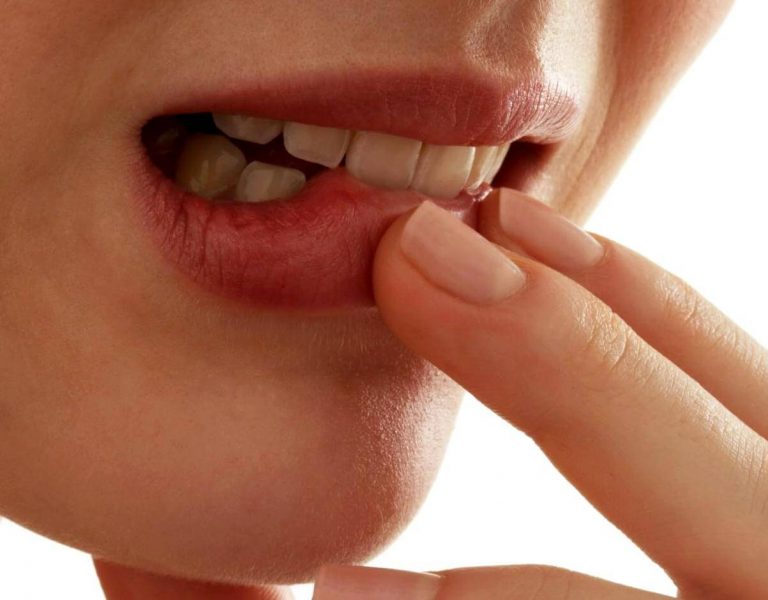
Among the factors that make this possible include:
- dehydration, inadequate intake of nutrients in the body and other factors contributing to the weakening of immune defense (hypothermia, HIV infection);
- minor damage to the mucous membrane, including those caused by insufficient saliva and dry mouth;
- radiation sickness;
- cytostatic chemotherapy;
- the use of toothpastes with sodium lauryl sulfate.
It is curious that against the background of a significant weakening of the natural protective mechanisms, the cause of the inflammatory process may be conditionally pathogenic microflora, normally living in the mouth and usually not leading to the development of diseases (str. Mutans, veylonella). A striking example of this is the final stage of development of HIV infection - AIDS. With normal immunity, stomatitis occurs only when aggressive, unconditionally pathogenic, bacteria, fungi or viruses enter the mucous membrane.
Types of Stomatitis
Stomatitis can be classified by etiological factor or by clinical manifestations.
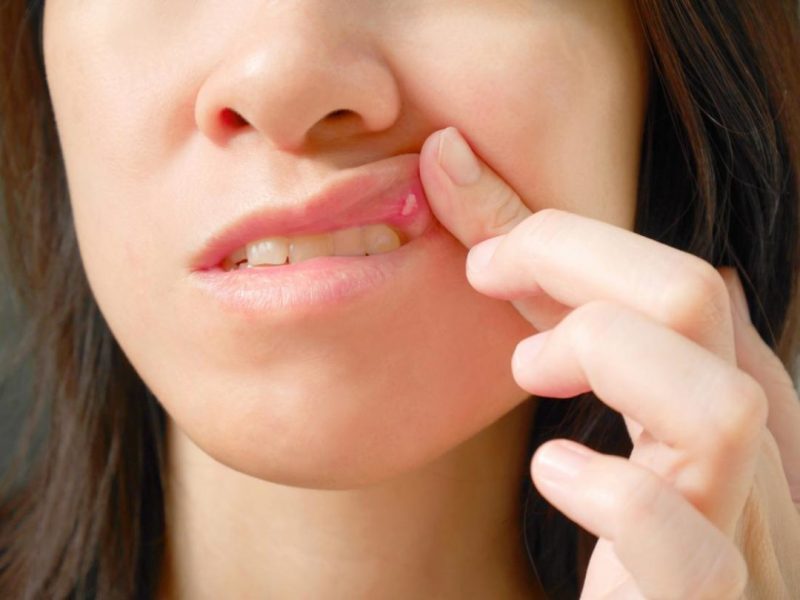
The first type of classification includes the following forms of the disease:
- bacterial - caused by staphylococci, streptococci, opportunistic flora;
- viral - etiological factor: herpes virus type 1 and 2, Coxsackie virus;
- fungal - develop when affected by fungi of the genus candida, more often in immunodeficiency states.
According to the clinical manifestations, stomatitis can be of the following types:
- catarrhal - hyperemia of the oral cavity;
- ulcerative - the formation of limited ulcerations;
- aphthous - a diagnostic sign - the presence of foci of aphthous lesions;
- ulcerative necrotic variety - common areas of necrosis in the mouth.
All morphological varieties of stomatitis at the initial stage resemble catarrhal inflammation. True clinical manifestations occur after a few days.
Symptoms and signs of the disease
Each type of pathology has its own symptoms. The main signs of stomatitis of all the described forms are shown in the following table:
| Type of disease | Characteristic symptoms |
|---|---|
| Catarrhal stomatitis | Edema, hyperemia, pain during eating, halitosis, bleeding, white plaque on the mucosa with the fungal origin of the disease |
| Ulcerative stomatitis | The mucous membrane is affected to the full depth, swelling, ulceration sites, pain when chewing food, general intoxication (hyperthermia, headache, muscle pain, fatigue, weakness, atony). |
| Aphthous stomatitis | Ulcers bordered by a red stripe, in the center of which there is a gray coating, general toxic signs, halitosis. |
| Ulcerative necrotic stomatitis | Necrosis of the epithelial edges of the gums, gradually spreading to the cheeks, bleeding, halitosis, intoxication. The ulcers are large, deep. Their diameter reaches 5-6 cm. In the center, a raid of gray-green color. |
Note: the main diagnostic signs occur in all cases of the disease, and make it possible to diagnose with a high level of accuracy. Nonspecific and subjective symptoms in patients may vary. So, some patients complain of severe discomfort and pain in the mouth even with a catarrhal form of stomatitis, while others do not report discomfort even in the presence of ulcerations on the mucous membrane.
What to treat in adults?
Treatment of stomatitis in adults can be carried out using medical or folk methods. The exception is severe necrotic processes. The use of alternative methods as the main treatment is unacceptable here. Pathology requires mandatory drug therapy.
Drug therapy
Treatment with medications is necessary only for severe and common processes that affect the general condition of the patient. An integrated approach is used, which includes general and local drug therapy.
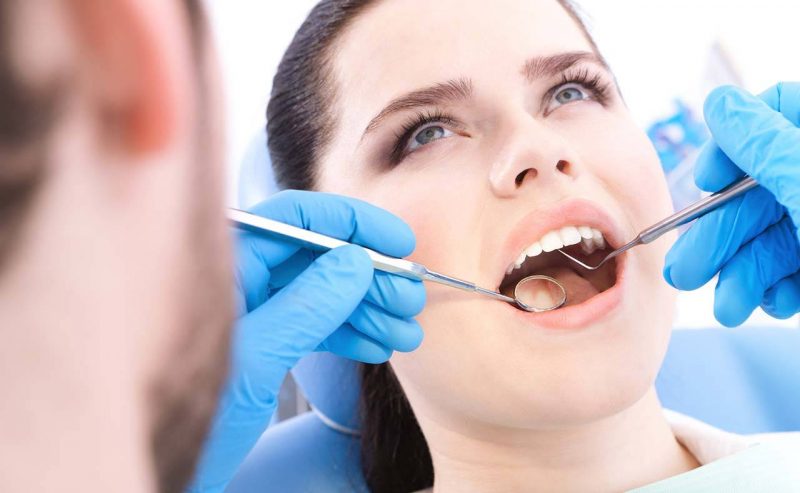
At the beginning of treatment, local oral anesthesia is performed to reorganize the oral cavity: remove traumatic factors and grind off sharp fragments of teeth. Next, the oral cavity is treated with an aqueous solution of chlorhexidine or another antiseptic solution. In the presence of widespread necrosis, proteolytic enzymes (trypsin, chymotrypsin) are applied by the application method - substances that break down dead tissue and do not affect healthy areas of the mucous membrane. Viral stomatitis requires the appointment of antiviral ointments (oxolin, tebrofenova, interferon).
Antibiotics are used as systemic therapy. Patients are prescribed drugs such as amoxiclav, trichopolum, ciprofloxacin. The average course of treatment is 7 days, but improvement should be noted already for 2-3 days. Otherwise, the antibiotic is considered ineffective and is changed to another group. With the allergic origin of stomatitis, the therapeutic regimen is supplemented with antihistamines (zirtec, zodak).

Note: zyrtec and zodak are relatively expensive drugs. If the patient belongs to a low-income category of the population, he may be prescribed first-generation drugs - suprastin, tavegil, diazolin. These drugs are quite effective, but have a significant drawback - pronounced sleeping pills.
Folk remedies
Alternative methods are used mainly for the treatment of catarrhal varieties of stomatitis. Before treating the disease using natural medicines, you need to visit a doctor who can make a differential diagnosis. With necrotic and aphthous inflammation, alternative therapy is used as an adjuvant.
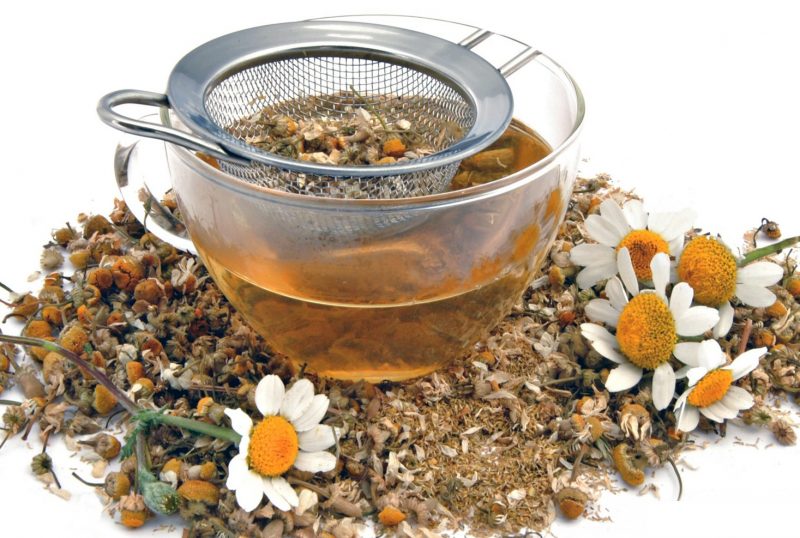
The following recipes are used:
- Chamomile infusion - flowers of a pharmaceutical chamomile in the amount of 20 grams should be poured with boiling water and insisted for half an hour. After that, the product is filtered through several layers of tissue and used to rinse. The solution must be put into the mouth, hold for 30-60 seconds and spit. The multiplicity of the procedure is 5-6 times a day, the course is until the symptoms of the disease completely disappear.
- Sea buckthorn oil - used for local treatment of ulcers. It has a pronounced regenerative and antiseptic effect. Lubricate the lesions 3-6 times a day. The course is until complete recovery.
- Oak bark infusion - prepared and used as well as chamomile infusion. The volume of raw materials is 1 tablespoon, the volume of water is 250 ml. The infusion time is 30 minutes. The tool has a pronounced tanning effect, relieves pain, fights infection.
In addition, herbalists and traditional healers recommend during the illness to eat more natural juices and foods rich in vitamins. This helps to strengthen immunity and a speedy recovery.
How to rinse your mouth?
The first rinse to be used after meals and in the morning is plain plain water. It is necessary to boil and cool it, then use it to treat the mouth and remove food debris. Instead of plain water, sterile saline may be used. Sometimes a pinch of salt is added to the rinse.

Mandatory is the use of antiseptic agents that do not contain alcohol (chlorhexidine, miramistin). Similar medicines should be prescribed by your doctor. Another medicine is lidocaine. It is applied to the mucous membranes by spraying, after which the sensitivity of the oral cavity decreases and a person can eat food painlessly.
Note: direct rinsing of the mouth with lidocaine is prohibited. Such actions will lead to "freezing" of all parts of the oral cavity and aspiration of food.
Features of treatment during pregnancy
Pregnancy, especially in its initial stages, requires the most careful use of drugs. Therefore, catarrhal stomatitis is recommended to be treated exclusively with folk remedies. Herbal infusions used as rinses are the safest way to treat.
Purulent necrotic inflammations require the use of traditional medicines. The main focus of therapy in this case is to minimize systemic effects. Treatment begins with rinsing with antiseptic solutions, removing necrotic masses with proteolytic enzymes. Perhaps limited, no more than 1 treatment per day, the use of local anesthetics in the form of a spray.
Systemic therapy is used only in the most severe cases, when the intended benefit for the mother significantly exceeds the risk to the fetus. If absolutely necessary, drugs of the cephalosporin group, used in parenteral form, can be prescribed. Injections are best done in a vein, since the dilution of antibiotics for intramuscular administration is made by novocaine or lidocaine.For pregnant women, these medicines are not recommended.
Disease prevention
Prevention of stomatitis consists in timely reorganization of foci of chronic infection in the mouth (caries), treatment of microtrauma of the mucous membrane and prevention of conditions that can cause immunodeficiency. In addition, the simplest hygiene rules should be observed: brush your teeth twice a day, use dental floss and soft wooden toothpicks, and rinse your mouth after each meal.
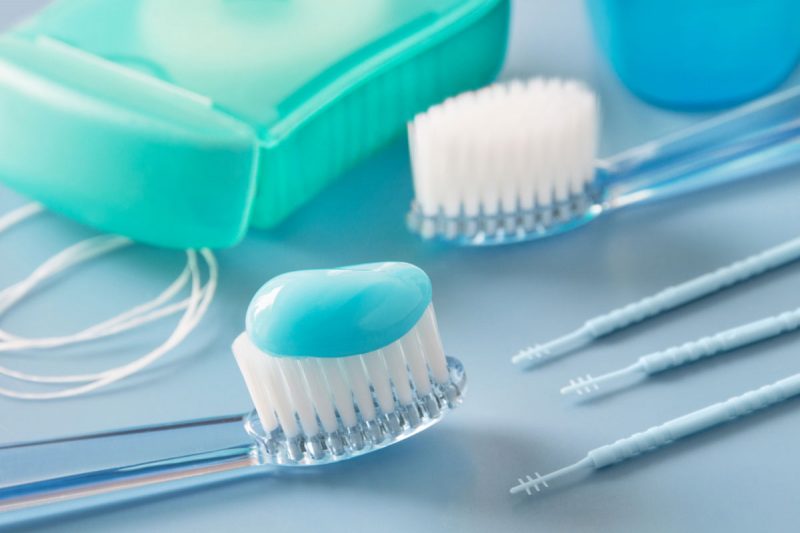
Many patients perceive stomatitis as a non-serious, easily treatable disease. This view is partly true, since the prognosis for stomatitis is usually favorable. However, one should not forget that any, even the mildest infection, under certain conditions, can begin to progress. The endpoint of this progress is sepsis, hospitalization, severe systemic treatment. To prevent such a development of events, at the first signs of the disease, you must consult a doctor for examination and treatment.












